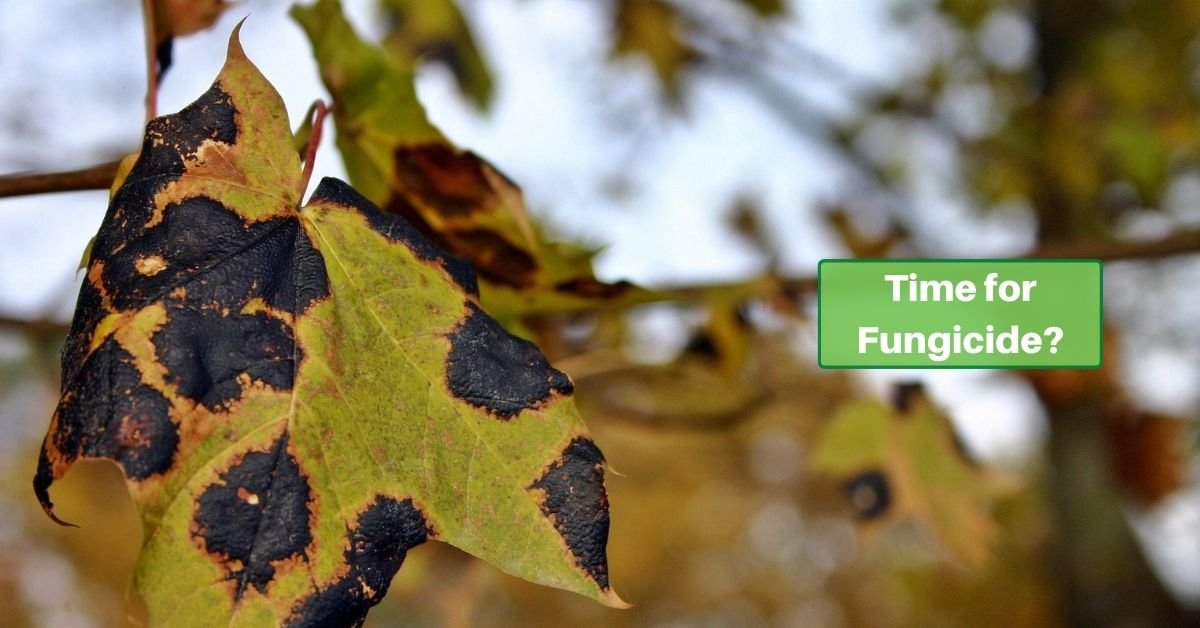Have you ever noticed unsightly spots on your lawn or withering plants in your garden? Fungal diseases, a common problem for gardeners and lawn care enthusiasts, often cause these issues.
Fungicides are often necessary to defeat fungal infections. These chemicals or natural substances kill or inhibit the growth of these fungi. Understanding fungicides and how to use them correctly can go a long way in maintaining the health and beauty of your garden and lawn.
Understanding Fungi: The Culprits Behind Plant Diseases
To effectively tackle fungal diseases in gardens and lawns, it’s crucial to understand what fungi are. Fungi are a kingdom of organisms distinct from plants, animals, and bacteria. They play vital roles in many ecosystems. They can act as decomposers and recyclers, breaking down organic matter. However, some fungi can be problematic, especially those that cause plant diseases.
Unlike plants, fungi don’t perform photosynthesis. They absorb nutrients from their environment, often living off other organisms, either as parasites or as decomposers. The structure of a fungus includes a network of tiny filaments called hyphae, which collectively form a mycelium. This mycelium can spread extensively underground or through its host, absorbing nutrients and causing damage.
Fungal spores, like seeds in plants, allow fungi to reproduce and spread. These spores can be incredibly resilient and travel long distances by wind or water. Once they land on a suitable host, they germinate, allowing the fungus to infiltrate and colonize new areas. That means there are many ways that fungi can spread: from plant to plant, through infected soil, blown in the air, or carried in runoff.
The diversity of fungi is astonishing. Estimates range between 2.2 to 3.8 million species, but only a fraction are known to science. While many are benign or beneficial, those that attack our gardens and lawns can be persistent and damaging, so understanding and managing them is critical to plant care.
Common Fungal Diseases in Gardens and Lawns
Fungal diseases in plants manifest in various forms, such as mildew, rusts, blights, and root rots. Symptoms include discolored spots on leaves, powdery or downy coatings, wilting, and stunted growth. For instance, the dreaded brown patch in lawns or the powdery mildew on roses result from fungal infections.
How Fungicides Work
Fungicides, the hero of our story, work by disrupting the life cycle of the fungus. They are categorized in various ways.
Contact fungicides stay on the plant’s surface and must be applied directly to the affected area. The plant absorbs systemic fungicides and can work internally to combat the fungus.
Chemical fungicides are synthetic products with specific action against fungi. They include products like chlorothalonil and mancozeb. While effective, they can be harsh on the environment. Organic or natural fungicides are made from natural ingredients, such as neem oil, sulfur, and copper-based products. They are often preferred by those looking for eco-friendly options. However, they might be less potent compared to their chemical counterparts.
Application of Fungicides
Applying fungicides requires careful consideration. Always read the label for the proper application rate and method. It’s best to apply fungicides at the first sign of disease and in the proper environmental conditions (usually dry, calm days). Safety is paramount, so wearing protective clothing and avoiding application near water sources is essential.
Integrated Pest Management (IPM) and Fungicides
Integrated Pest Management (IPM) is a holistic approach to plant health. It involves using various tactics, such as biological control, cultural practices, and chemical interventions, in a coordinated way. Fungicides play a role in IPM, but they are typically used as a last resort after other methods have been considered.
Choosing the Right Fungicide
Selecting the proper fungicide depends on several factors, such as the type of plant, the specific fungal disease, and environmental conditions. For example, systemic fungicides might be better for plants with dense foliage. In contrast, contact fungicides could be suitable for surface diseases. Also, consider the potential impact on beneficial insects and the surrounding ecosystem.
Environmental and Health Considerations
Using fungicides raises concerns about their impact on the environment and human health. Chemical fungicides, in particular, can harm beneficial insects and aquatic life and even pose risks to humans if not handled properly. It’s essential to use them responsibly and explore eco-friendly alternatives when possible.
Alternatives to Fungicides
Practices such as proper watering, adequate spacing of plants, and maintaining soil health can significantly reduce the incidence of fungal diseases. Additionally, biological control methods can be effective alternatives, like introducing beneficial microorganisms that compete with or inhibit fungi.
Fungicides, when used correctly, can be a valuable tool in maintaining the health of your garden and lawn. However, it’s crucial to approach their use with care, considering their effectiveness and impact on the environment and health. You can ensure a thriving, healthy garden and lawn by adopting responsible practices and integrating other disease control methods.









